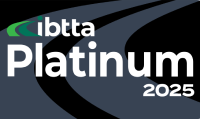Implementation of any complex large-scale project inevitably carries with it some unexpected costs. A tolling system is no exception. Still, when you choose an automatic license plate recognition (ALPR) solution, you expect ‘automatic’ to mean automatic. Unfortunately, toll authorities often incur much higher operating expenses than anticipated due to the large and unpredictable number of images requiring manual review.
This is what happens when people use the same words to mean many different things.
Manual review costs can be so high, in part, because various ALPR camera providers use different terminology and methods for measuring the most basic functions of their systems. What is the formula for measuring accuracy? What is an ‘exclusion’? What is the difference between ‘read rate’ and ‘attach rate’? Or should it be called ‘yield’? Through careful use of ambiguous and undefined industry terms, some suppliers are able to create the illusion of procurement specification conformance without committing to an objectively measurable standard.
To avoid confusion and unintended expenses, it is vitally important that you understand the terminology and methodology ALPR providers use before assessing the value of each solution. Without a shared definition of industry terms, how can toll authorities ensure compliance or compare providers? Without knowing what formulas are being used to calculate these measurements, how does a toll authority know how much to budget for the manual review process? It doesn’t have to be complicated.
Perceptics uses the following definitions, whose standardization across the industry could ensure real communication and neutralize much of the subterfuge and confusion we see today:
Exclusions: All plates are considered readable unless extenuating circumstances prohibit an ALPR camera from finding a plate. A vehicle that is missing a plate, or whose plate is obstructed (covered with snow or blocked by the ball of a trailer hitch, for instance) would be excluded.
Readable license plates: This is the number of plates (not vehicles) that have not been excluded. Fewer excluded plates means more plates are considered readable. Unfortunately, a provider could exclude a large majority of plates encountered yet still claim a very high accuracy rate, thus misrepresenting their system’s true performance.
Number of Readable Plates = Number of Total Vehicles – Number of Exclusions
Low confidence reads: If a plate can’t be read at or above the confidence threshold set by the toll operator, it is considered to be a low confidence read. It is still readable, but the system just isn’t confident enough to register a result.
Results: The number of readable plates minus the low confidence results.
Number of Results = Number of Readable Plates – Number of Low Confidence Reads
Attach rate: The percentage of readable plates that produced a result.
Attach Rate = Number of Results
Number of Readable Plates
Accuracy: The percentage of results that were read correctly.
Accuracy = Number of Correct Reads
Number of Results
Read rate: The percentage of readable plates that were read correctly.
Read Rate = Number of Correct Reads
Number of Readable Plates
I.e., read rate is the product of the attach rate times the accuracy, or a measure of the overall efficiency of the ALPR solution.
With national interoperability a near-term goal and only 30% of vehicles in North America RFID-enabled, ALPR technology is ideally positioned to unify toll collection systems across the country. Every vehicle that travels on public roads has a unique identifier in the form of a license plate. Since these plates are distributed and managed at no cost to the toll collection market, and since the technology needed to read them is already incorporated in most systems, it makes sense for the industry to use them to improve toll collections.
However, before we can agree upon and effectively implement a common technology, we must speak a common language.
This article appeared in the August/September 2017 issue of Traffic Technology International.



